In this article, we’ll go over each part of the tennis racquet, from the butt cap to the strings and face, and explain how they work together to create a modern tennis racquet. So, whether you’re a beginner or an experienced player, I’m sure you’ll learn something new about the tennis racket and its parts.
If you’re new to purchasing a tennis racquet or looking for a replacement, it’s important that you know each part of a tennis racket and its effect on your performance. This knowledge will aid you in making a better-informed decision when selecting a racquet. Once you’ve grasped the various parts of a tennis racquet, make sure to take a look at my comprehensive guide to the best tennis rackets for beginners 2023.
Table of Contents
Parts of a Tennis Racket Visual
It is important to understand that there is a difference between the individual components of a tennis racket and its specifications published by the manufacturer.
The individual parts are the names of the components that all rackets have in common, while the specifications are the specific, measurable characteristics that make each racket unique, such as its weight or balance point.
In this article, we’ll limit ourselves to the basics and dive into the interesting world of the components of a tennis racket and see what a tennis racket is made of.
Parts of a Racquet vs. Specs
You’ve probably noticed that tennis rackets have changed a lot in the last 20 years. There are now a lot of different technologies and materials, but the main components of tennis rackets have remained the same.
Here you can find a visual representation and a list of all the main components:
Bumper Guard
The bumper guard is a protective strip made of material that covers the top of the racket head and helps prevent damage to the frame.
The bumper guard is a protective piece of material that covers the head of the tennis racket. It is usually made of rubber or plastic and is designed to protect the frame of the racket from damage that would otherwise occur from contact with the court surface. Especially on ash or hard courts, a single stroke that skims the ground can result in ugly scratches.
Frame protection plays an important role in the longevity of a tennis racket. Without a bumper guard, the racket’s frame is more susceptible to scratches, chips and cracks. Over time, this damage can weaken the racket’s structure and affect its overall performance and makes it look ugly as hell.
The bumper guard not only provides protection, but can also be used to change the look of a tennis racket. Many manufacturers offer different color options for their frame protectors, allowing you to add a personal touch to your equipment.
It is important to regularly check the bumper guard for wear, as it can become damaged over time. If the bumper guard is badly worn or damaged, it should be replaced to keep your racquet protected.
A much cheaper and quicker alternative to apply, is a frame protector tape that is simply taped to the outside of the frame. It may not look as nice, but it works very well!
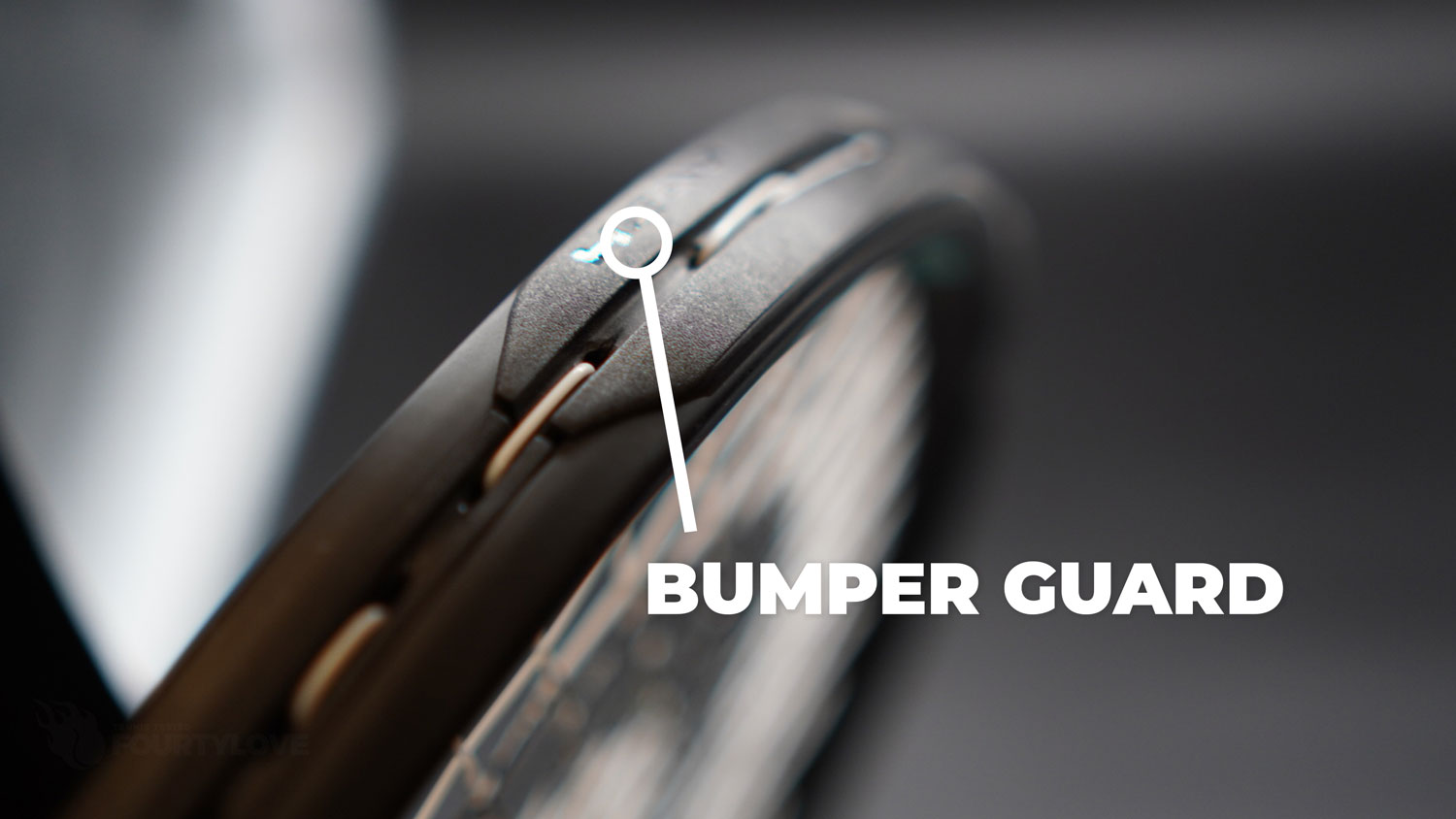
Butt
The lower part of the handle of a tennis racket.
The butt or grip end of a tennis racket is the lowest part of the grip. This is slightly thicker than the rest of the handle and is only used as a general term for the lowest part of the handle.
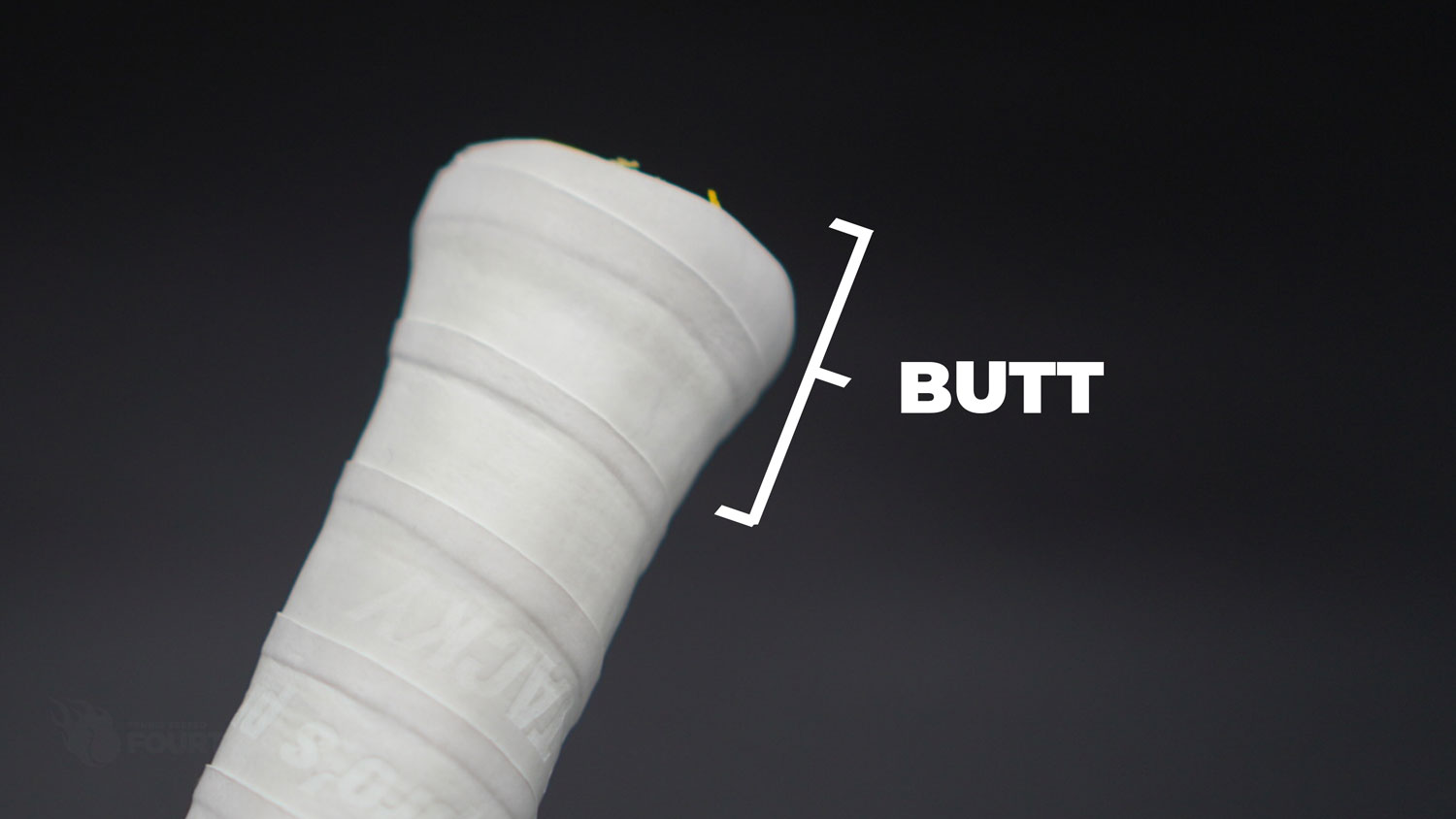
Butt Cap
The plastic or rubber piece that covers the end of the handle of a tennis racket.
The butt cap of a tennis racket is a small, round piece of plastic or rubber that closes the grip from underneath.
Another purpose of butt caps is to be able to customize the weight and balance of the racket. Some butt caps are removable, and by adding or removing weight to the cap, players can adjust the center of gravity of the racket to their style of play.
Butt caps usually contain the racket manufacturer’s brand logo, adding a personal touch to the racket, and can be ordered from various tennis stores for replacement. But beware: Not every butt cap fits every racket!
There are also suppliers, such as Royal Rackets, who make individual grip caps.
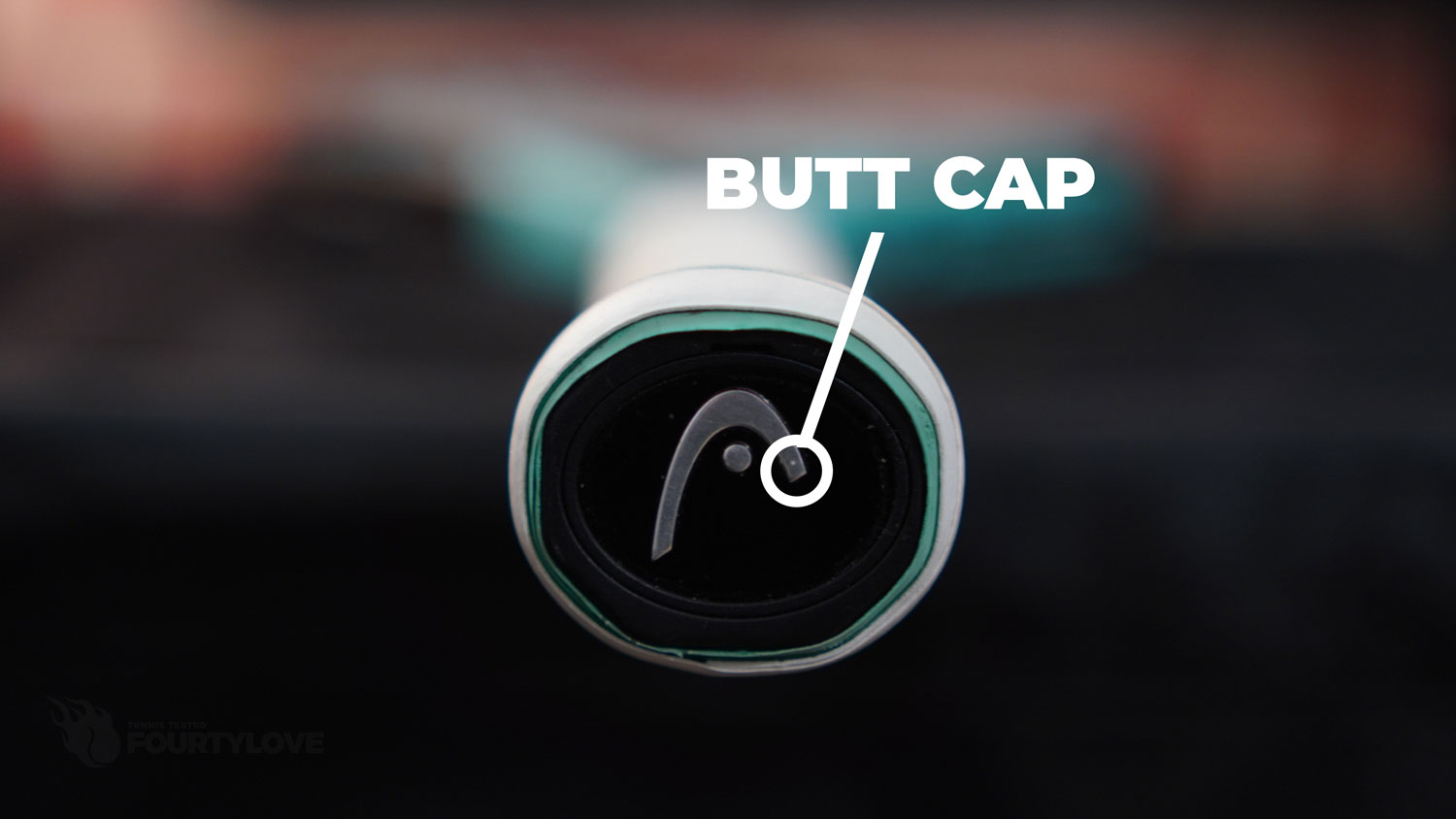

Collar / Grip tape rubber
A small rubber band that covers the upper end of the grip tape.
The grip tape rubber which is also called “collar” fulfills only the function to cover the upper edge of the grip tape, so that protruding parts of the grip tape do not disturb and so that the grip tape also holds well and does not slip.
Most players do not even know this grip tape rubber, because it is often no longer supplied with a new racket and because each grip tape comes with an adhesive tape, which has the same function. In addition, there is also the possibility to buy a so-called “Finishing Tape” separately, such as this one from HEAD.

Dampener
The dampener, or more accurately “vibration dampener”, is a small accessory that is placed between the strings on the upper part of the racket head to reduce vibrations.
A dampener is made of a soft material such as rubber or silicone and is used to reduce vibrations and unwanted noise that may occur during the stroke.
Dampeners often come in the shape of the manufacturer’s logos or in other pop culture-relevant shapes, such as this Minions dampener.
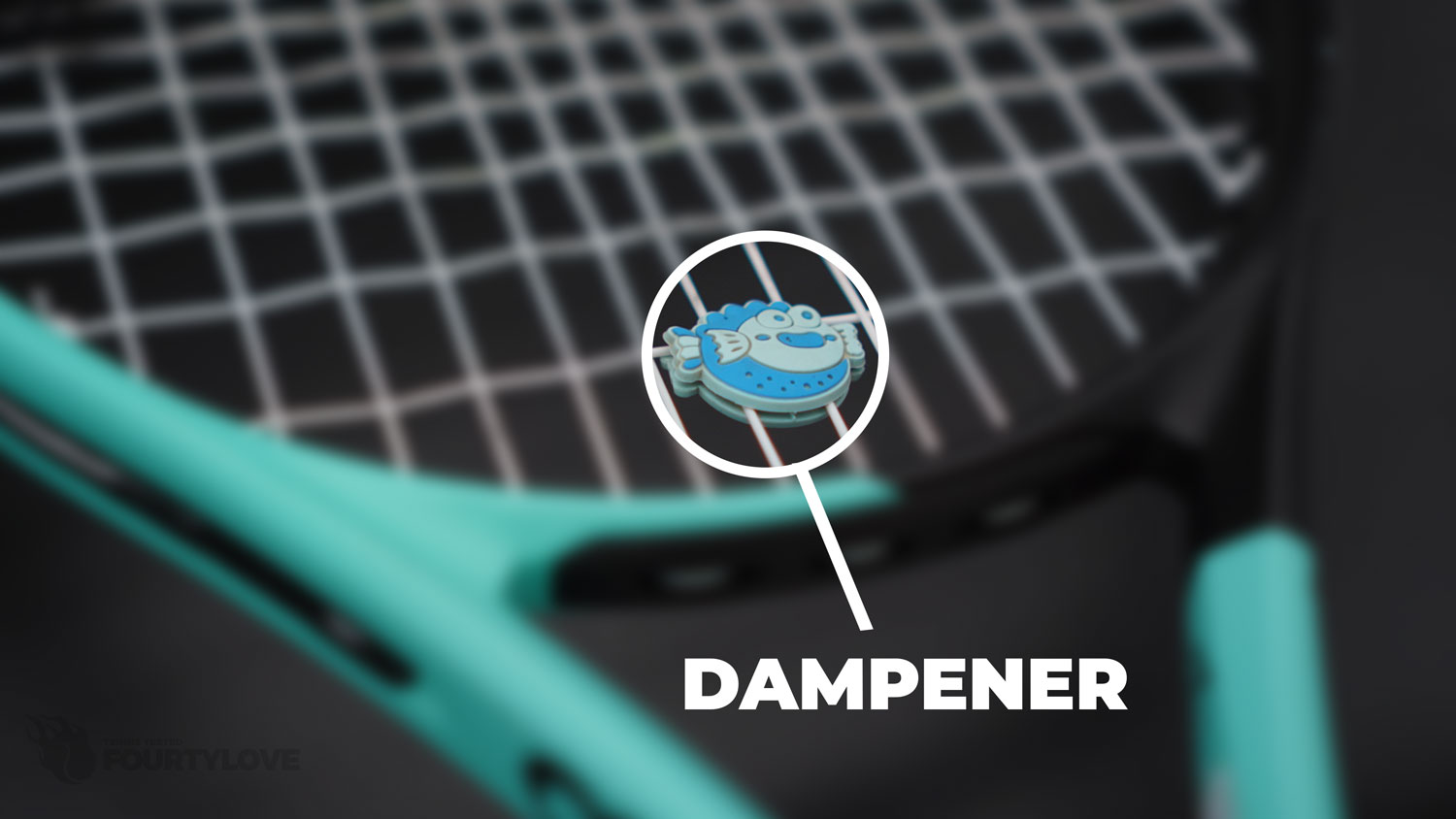
Frame
The entire structure of a tennis racket, including the head, neck, shaft and handle.
The frame of a tennis racket is the main part of the racket that connects the handle to the head. It is usually made of a composite material such as graphite or carbon fiber and can vary in shape, size and weight.
The term “frame” can mean the entire racket, but it can also mean just the frame at the head of the racket.
The frame is an essential component of the tennis racket and plays a critical role in determining the overall performance of the racket. A well-designed frame can provide players with more power, control and maneuverability on the court.
The weight of the frame is a critical factor to consider. Lighter frames are easier to maneuver and offer more control, while heavier frames offer more power and stability but require more physical effort.
The frame of a tennis racket can also feature various technologies and innovations to improve performance. For example, some frames feature dampening technology to reduce vibration and improve comfort.
Beam Width
Beam width or Frame thickness refers to the length of the outer edge of the racket head that surrounds the string bed.
The rim of a tennis racket is the outer edge of the racket head that surrounds the string bed and is referred to as the beam width. So if someone says they play with a “thin frame,” they are referring to the edge of the frame.
One of the main functions of frame thickness is to provide structural support for the racquet head.
The thickness of the frame plays an important role in the performance of the racquet:
- A thicker frame provides more stability and power by adding mass and rigidity to the racket. This can be beneficial for players who prefer a more aggressive style of play, as it allows them to generate more power and control in their shots.
- Conversely, a thinner frame provides more control over the ball and allows players to generate more spin and precision on their shots.
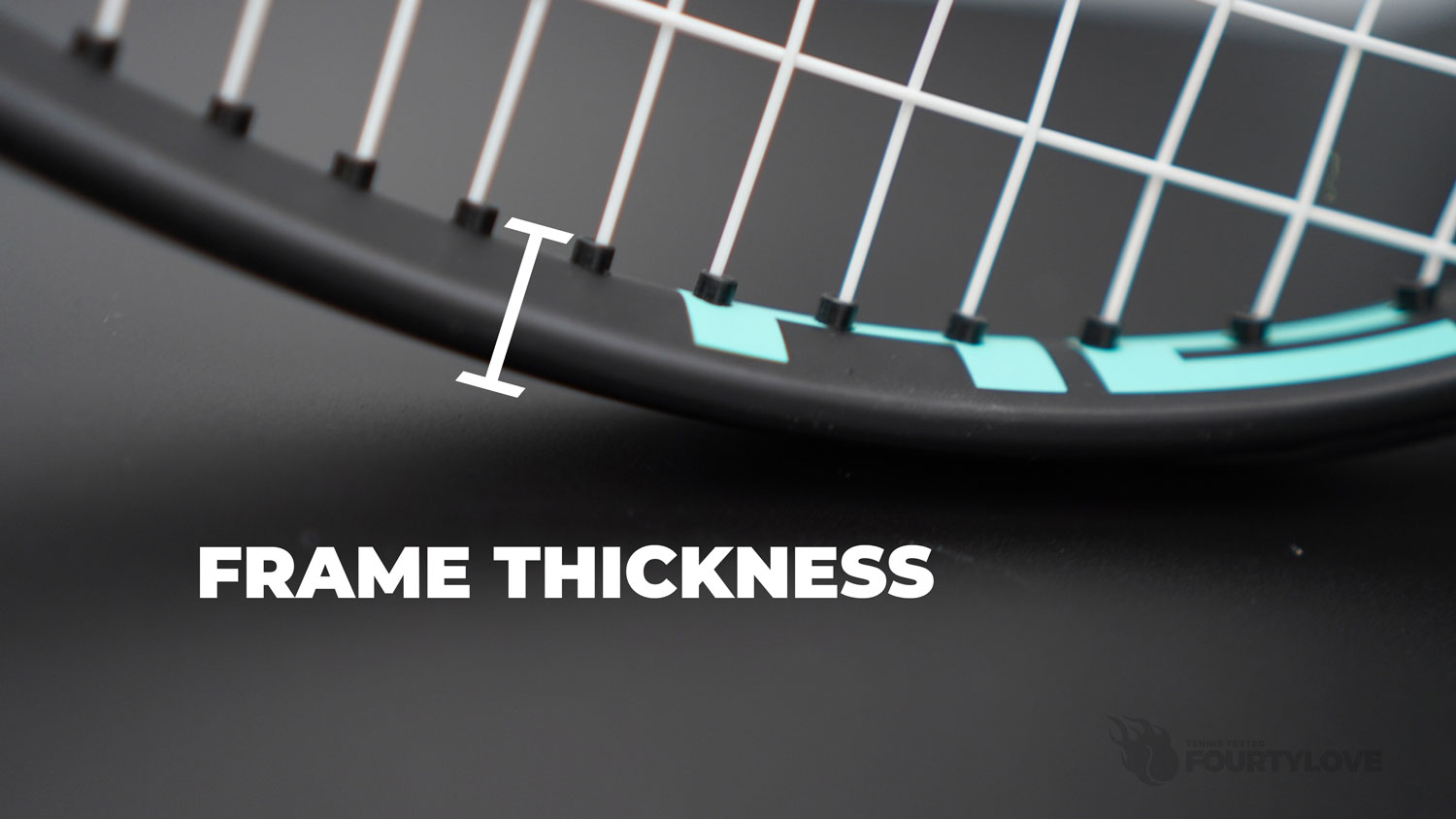
Grommets
The plastic or rubber openings through which the strings are fed when they are strung through the racket head.
The grommets on a tennis racket are small plastic or rubber pieces that are inserted into the holes on the edge of the racket head. They act as a protective cover for the strings and help reduce friction between the strings and the frame.
Grommets play an important role in preserving the life of the strings and the racket frame. Without grommets, the strings can rub against the frame and cause friction, which can cause the strings to break or damage the frame. Eyelets also help absorb shock and vibration during play, reducing the impact on the player’s arm and hand.
Eyelets come in different shapes and sizes, and their placement can affect the characteristics of the racquet. Some grommets have larger holes to allow the strings to move more easily, which increases the power and spin potential of the racquet. Other grommets have smaller holes to improve control and precision.
For example, some grommets reduce drag and increase racquet speed, while others reduce vibration.
It’s important to check the grommets regularly for wear and replace them as needed. Worn or damaged grommets can be very sharp and cause the string to break very early. I have seen cases where the string has broken in the tennis bag.

Grommet Strip
The plastic inserts in the grommets that protect the strings as they pass through the racket head.
The grommet strip on a tennis racket is a long, thin piece of plastic or rubber that is inserted into the holes, or grommets, on the edge of the racket head. It serves the same purpose as individual grommets, protecting the strings as well as the frame by reducing friction between the strings and the frame.
Grommet strips are designed to cover a larger area of the racket head than individual grommets. They come in a variety of lengths and shapes, depending on the racket model and manufacturer.
One of the main advantages of eye bands is that they provide better protection for the strings and frame compared to single eyelets.
As with individual grommets, it is important to regularly check the grommet strips for wear and replace it as needed. It is also important to pay attention to the exact model when purchasing eyelet straps. For example, this grommet strap will only fit the Wilson Blade 98 V8.
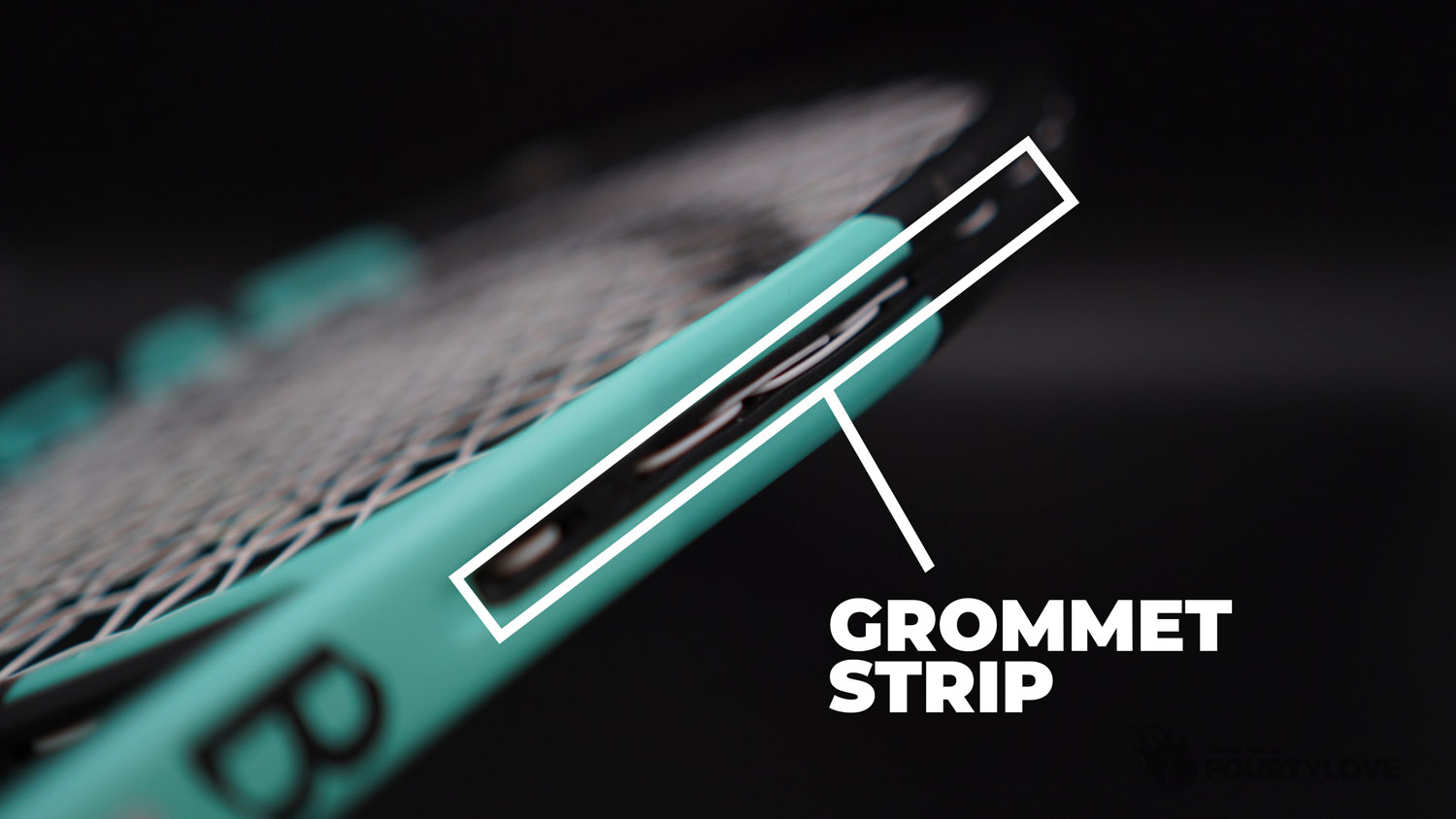
Grip Tape
The material that covers the handle of a tennis racket to provide a secure grip.
The grip tape can also be wrapped with an “overgrip” which, confusingly, is often called a “grip tape”. This makes the grip minimally thicker and less slippery. Grip tapes come in a variety of thicknesses, textures, and colors. One of the most popular giff tapes is Tourna’s Grip Tour in blue.
One of the most important functions of the grip tape is to provide a non-slip grip despite sweat and moisture on the hand. Some grip tapes are equipped with moisture-wicking properties to keep the grip dry and prevent slippage.
It is important to replace the grip tape regularly, as it can become worn or lose its grip over time.

Handle
The grip with which a player holds the racket. It is usually wrapped with a material such as leather or plastic, describes the area that the player holds.
The handle consists of the grip band under which the Replacement Grip is located. Underneath this Replacement Grip is the handle cup, which is connected to the rest of the racket.
Some tennis rackets have a longer handle, increasing the power of the swing. The circumference of grips ranges from 4 – 4 ⅝ (10.10 – 11.75 cm) when measured in inches. It is important to understand that grip circumference is measured in inches, as it is used to derive grip strength. A handle with a circumference of 4 ⅝ corresponds to handle strength L5.
Here you will find instructions on how to easily find out your grip size at home.
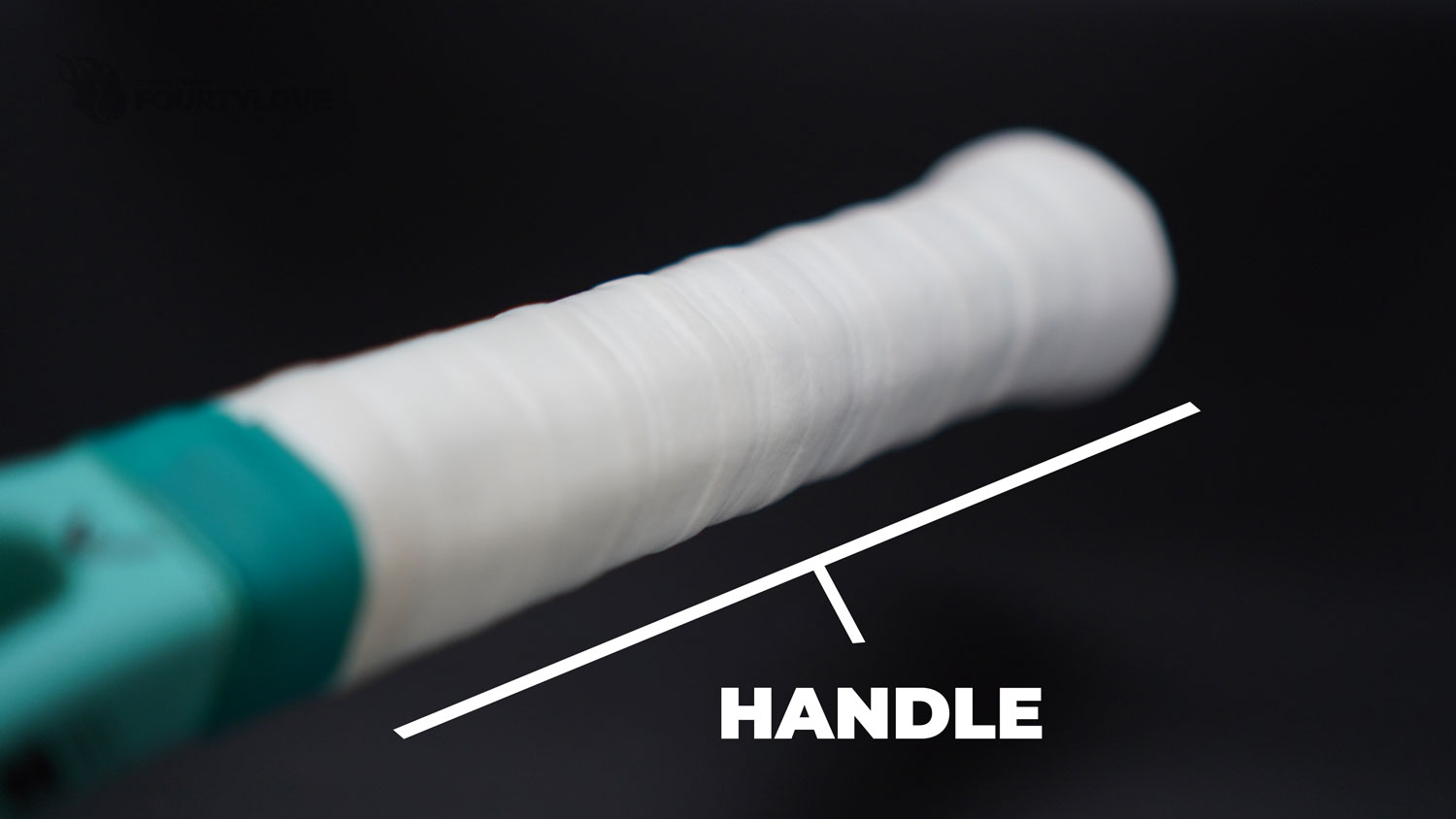
Handle bevels
The angled bevels of the handle that provide a comfortable and secure grip.
The handle bevels of a tennis racket are the angled surfaces that are located on the handle of the racket. They are usually made of the same material as the handle and are located between the handle and the frame.
The bevels on the handle of a tennis racket are designed to give the player a more comfortable grip. They help the player grip the racket better and reduce the risk of slipping.
Additionally, handle bevels are often used to define the positions of the hand for certain grip types, such as the Western or Eastern grip.
The size and shape can vary depending on the racket model and manufacturer.
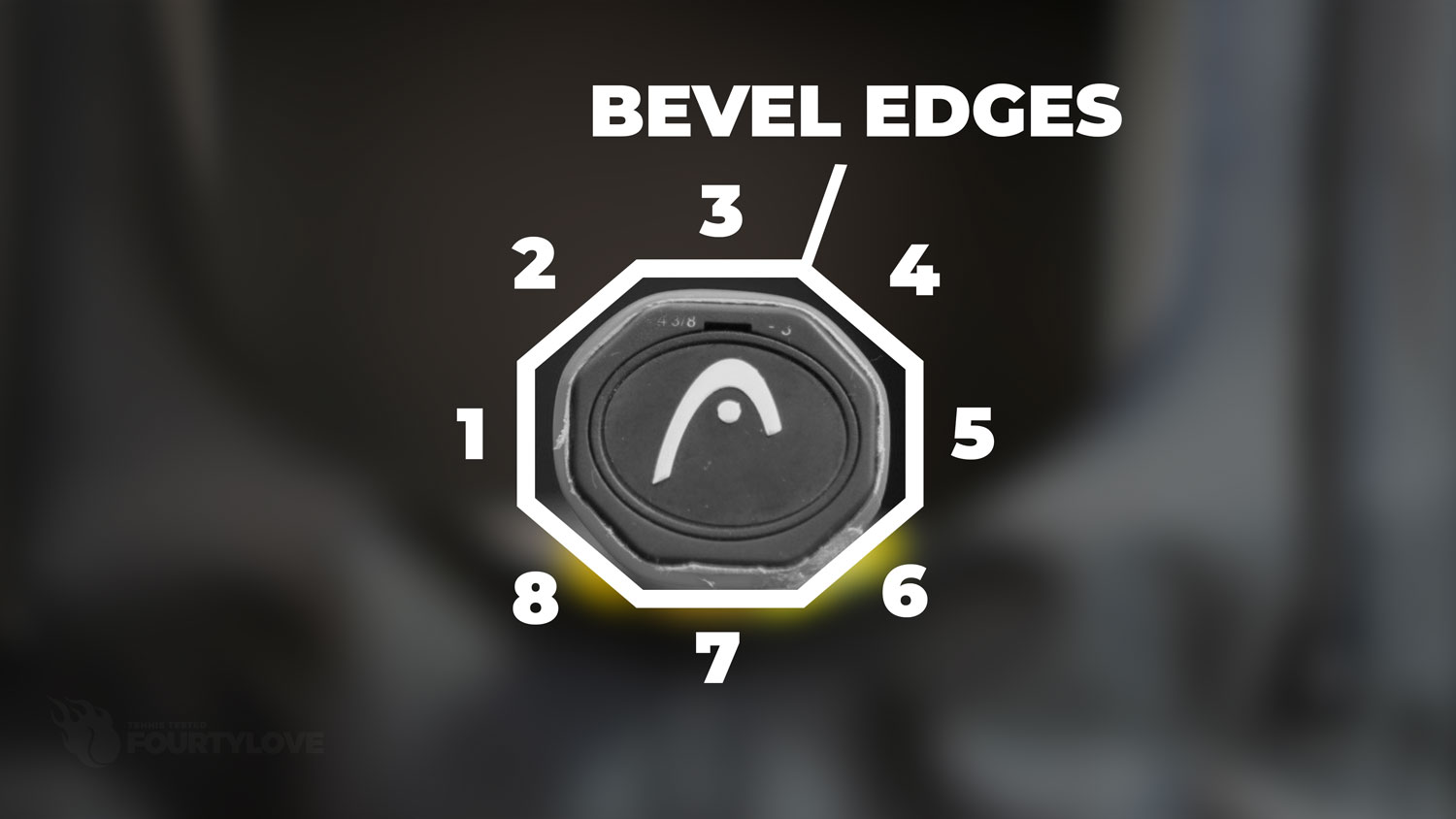
Racket head
The oval part of the racket on which the strings are stretched.
The head of a tennis racket is the part of the racket that comes into contact with the ball during play. It is usually made of a material such as graphite or carbon fiber and can vary in shape, size and number of eyelets.
The size and shape of the frame can vary depending on the player’s preference and skill level. Smaller frames, around90 – 98 square inche, are usually preferred by advanced players who value precision and control. Larger frames, around 100 – 115 square inch, are more forgiving, offer more power and are therefore better suited for beginners.
The shape of the club head can also vary: Some rackets have a traditional oval shape, others (mostly Yonex rackets) are slightly elongated to increase the sweet spot or look like a drop of water (teardrop shape) (HEAD Gravity). The string pattern on the head can also affect the racket’s performance, as different patterns offer different spin potential and control.
The head of the tennis racket is an essential component that has a decisive influence on the overall performance of the racket.

Replacement Grip
The Replacement Grip, or Basicgrip, of a tennis racket is the first, very thick, rubber or leather grip strap that is wrapped around the racket’s handle during manufacturing.
It is usually made of synthetic or natural materials such as rubber or leather and is designed to provide the player with a comfortable and secure grip.
Unlike the grip tape (overgrip), the Replacement Grip almost never needs to be replaced. Some players do not use an overgrip because they prefer the feel of the leather grip. In this case, the Replacement Grip must be purchased separately and replaced regularly.
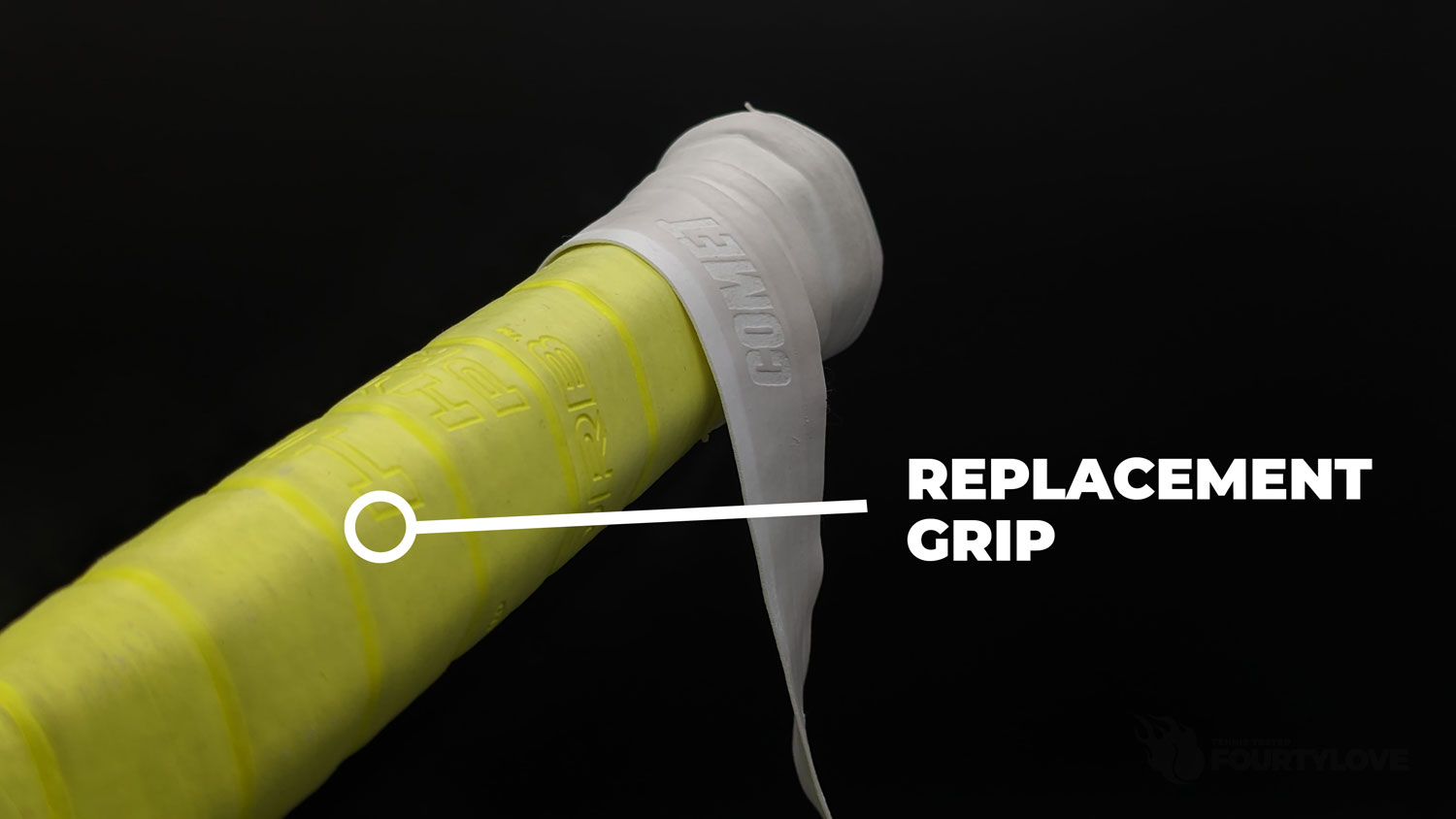
Replacement Grip Pallets
The replacement grip pallets are located at the bottom of the racket and are usually not visible because they are wrapped by the base grip tape during production.
The pallets are the part of the tennis racket that you will probably see the least often. It is only replaced when it is damaged or when a player wants to significantly increase or decrease the grip strength of their racket. Replacing the replacement grip pallets is not an easy task and should be done with the help of a professional.
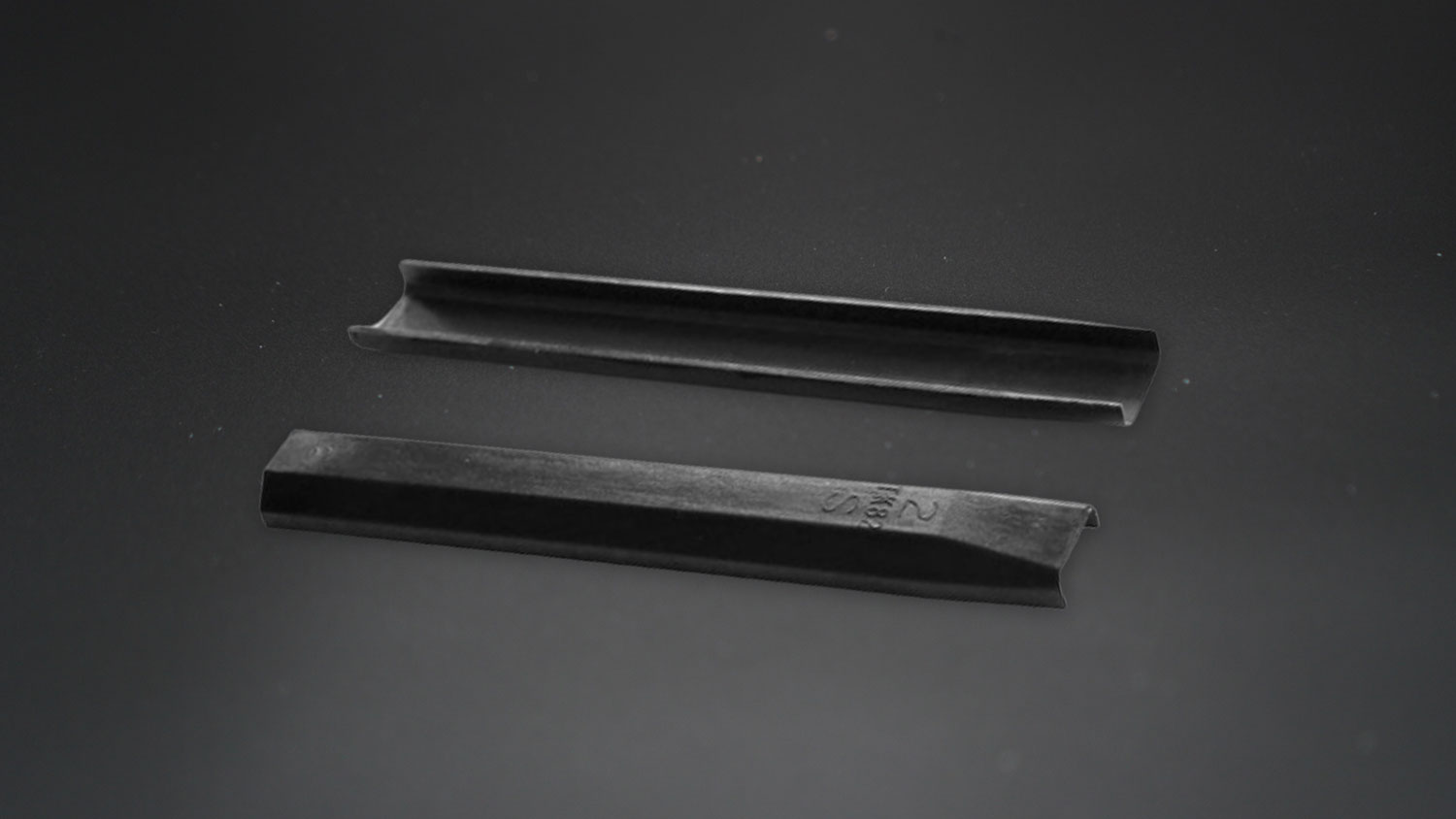
Strings
The material that is stretched over the racket head and forms the stringbed.
The strings of a tennis racket are a critical component that directly affects the racket’s performance on the court. The strings are strung in a specific pattern on the racket head, with the main strings running from top to bottom and the cross strings running from side to side. If you are looking for a good string that suits your game, you are sure to find it with on The 7 Best Tennis Strings 2023.
The type of string material and the string tension can affect the power, spin, control and feel of the racquet. Strings can be made of synthetic materials like nylon or polyester, or natural materials like gut. Synthetic strings tend to be more durable and offer more control, while natural strings offer more feel and power.
The tension of the strings, also called stringing tension, has a huge impact on the property of the strings. Strings with higher tension offer more control and precision, while strings with lower tension offer more power and spin.
Main strings
The longest strings, or “mains,” are usually strung vertically, while the cross strings are strung horizontally. The mains can be strung at a higher tension than the cross strings to provide more control and precision.
In hybrid stringing, the main strings are usually strung with a gut string.
Cross strings
The cross strings, also called “crosses”, are the horizontal strings that cross with the main strings and form the stringbed of the racquet. They are usually strung at a lower tension than the main strings.
In hybrid stringing, the cross strings are usually strung with a poly string.
It is important to check the strings regularly for wear and replace them as needed. Worn or damaged strings can result in reduced performance and possible damage to the racquet frame.

Approximately 40 feet of strings are needed to string a racket. You can buy a string in 40 feet sets or 660 feet reels. The price-performance ratio of 660 feet reels is of course much better and worth it when you have found a string you like to play with.
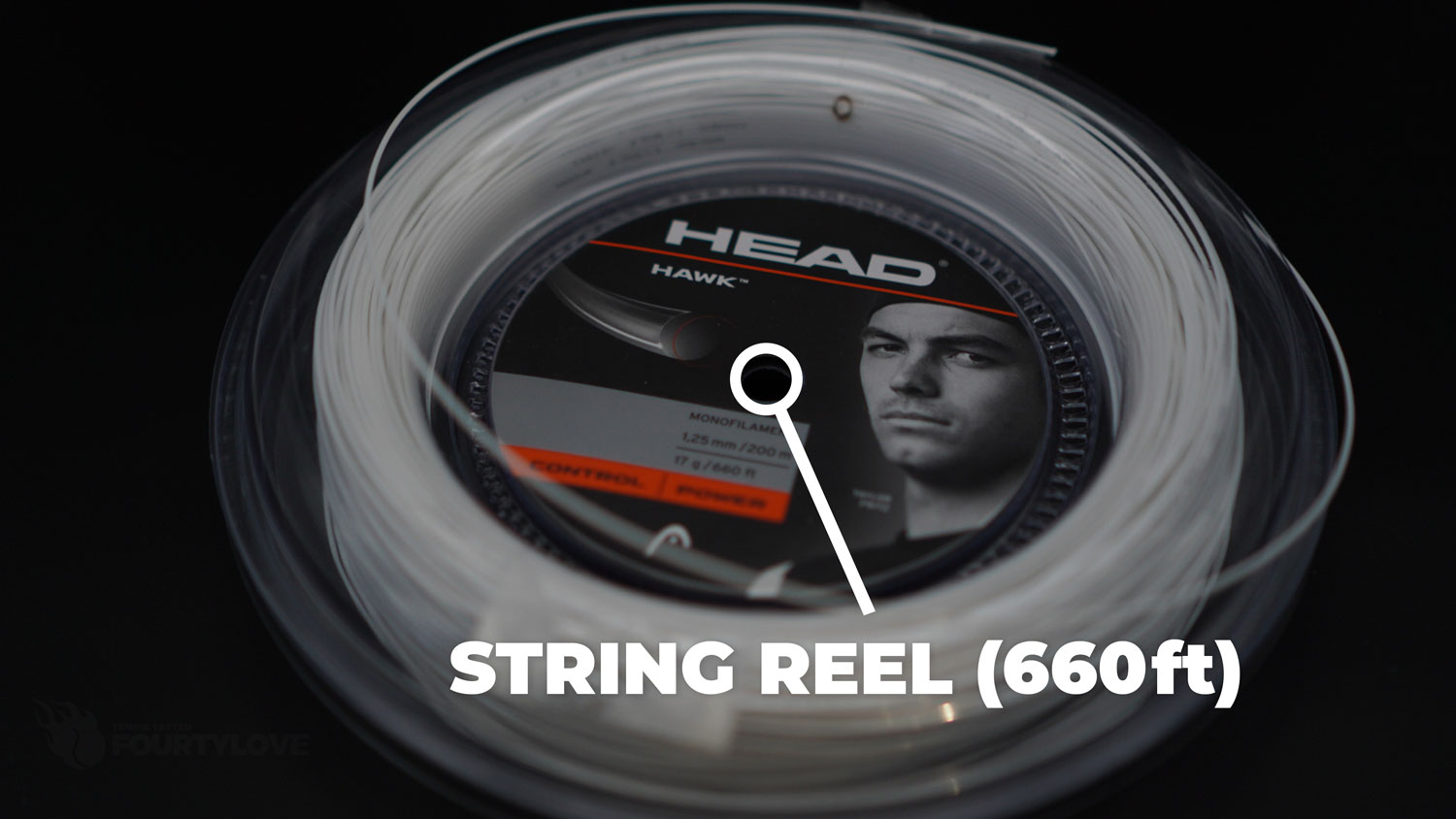
Shaft / Heart / Neck
The long, narrow part of the club that connects the club heart to the handle.
The shaft splits into two sections and forms the formation of the head. The design of the shaft is a major factor in the flexibility of the club. A “stiff” racket often provides less flexibility at the racket heart to generate additional power when hitting.
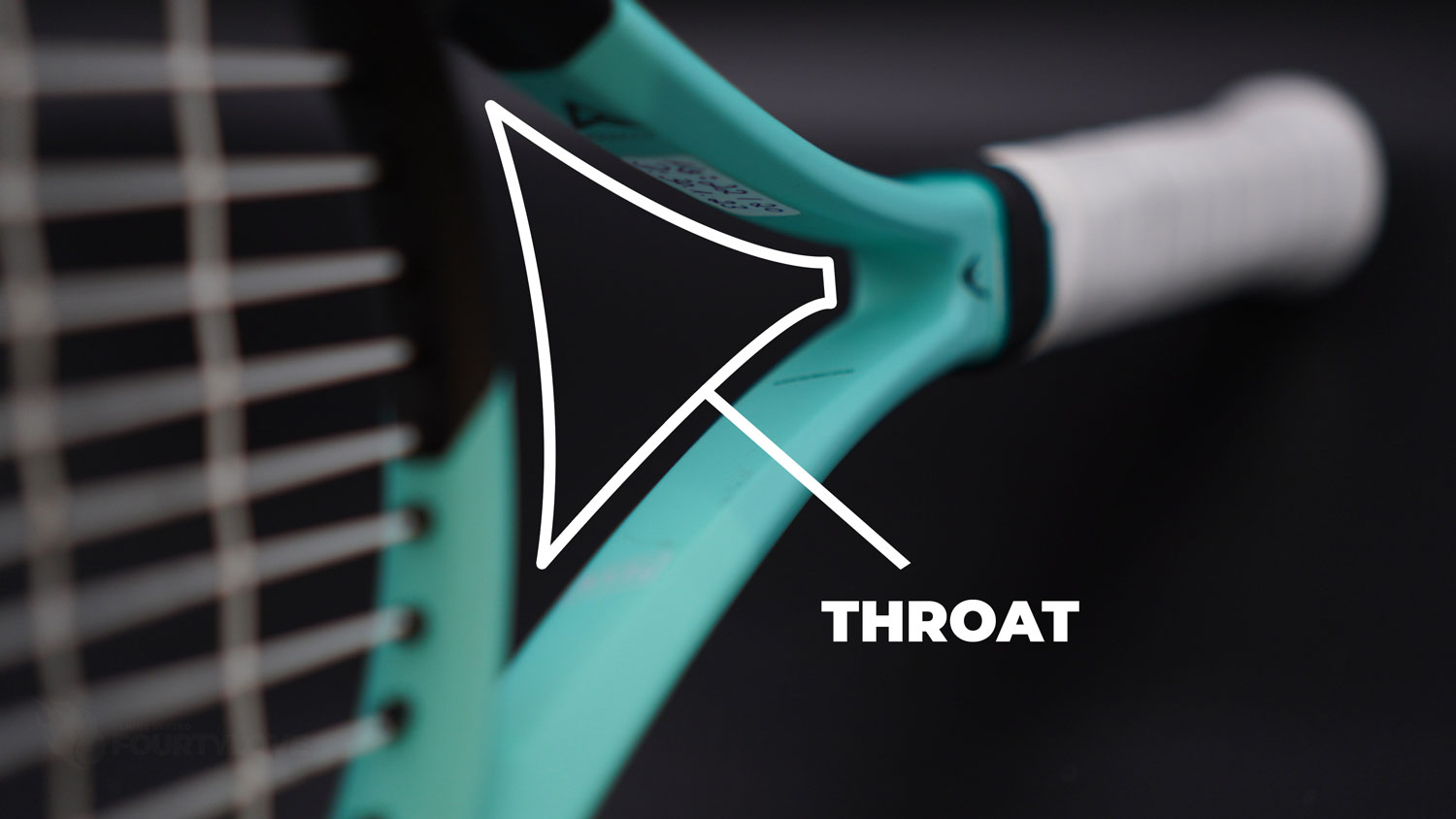
Questions?
I hope my article helped you learn more about the different parts of a tennis racket. If you have any questions or need more information, feel free to leave a comment below. I look forward to your feedback and will be happy to help!
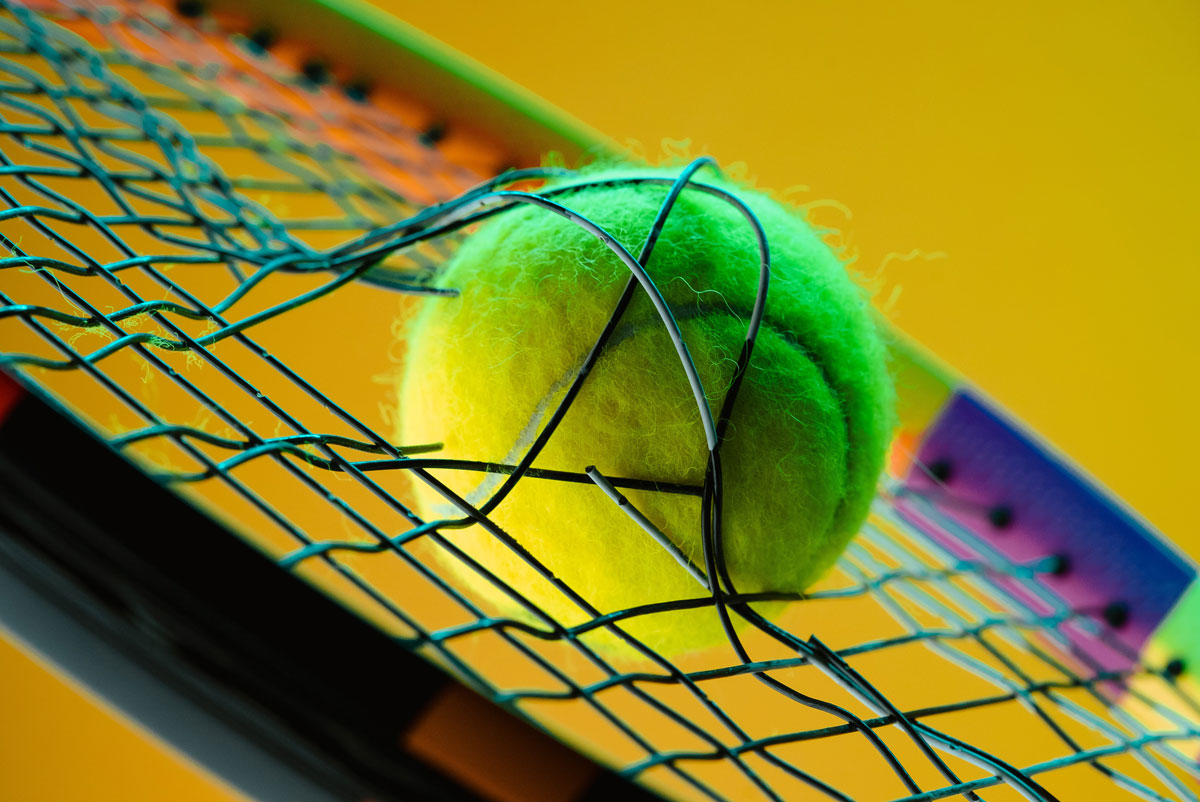
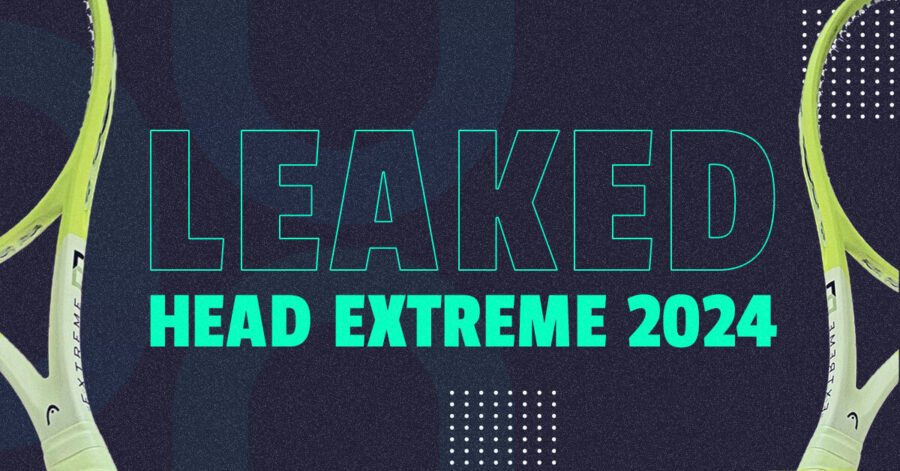
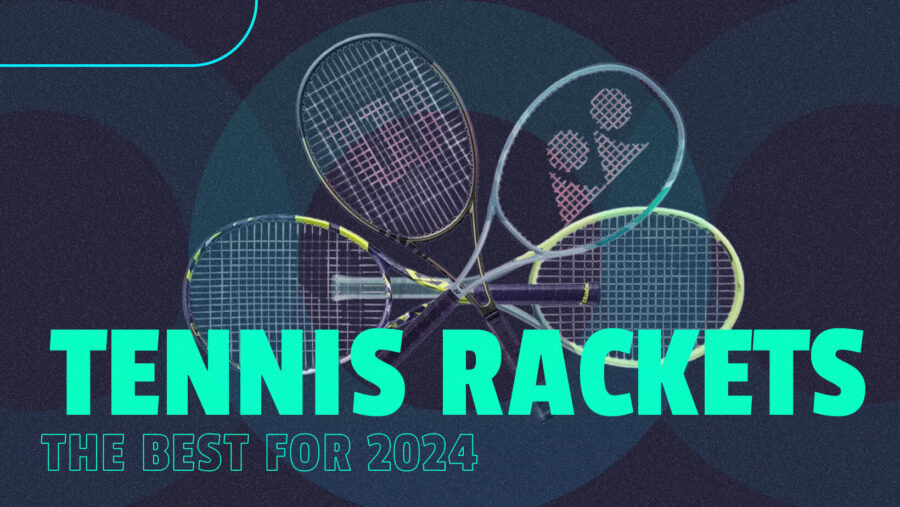
Comments